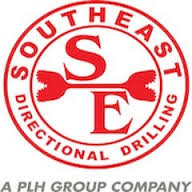July 2016, Vol. 243, No. 7
Features
SEDD Completes Challenging Gas Pipeline Crossing Under Hudson River

More than 400 years have passed since explorer Henry Hudson sailed up the river that would eventually bear his name, searching in vain for a passage to China on behalf of the Dutch East India Company.
Today, upstate New York’s Hudson River Valley is far from the savage wilderness Hudson found in 1609, but enough of its natural, picture-postcard beauty remains to steal one’s breath away at first view. And thanks to environmental conservation efforts started in the early 1960s, much progress has been made in improving water quality and otherwise preserving the area’s abundant natural resources.
So, as with all projects for Southeast Directional Drilling, minimizing the environmental effects was of paramount concern when they began a project for Spectra Energy that involved a natural gas pipeline crossing underneath the Hudson River. The project is part of the Spectra Energy’s Algonquin Incremental Market (AIM) project that expands the pipeline capacity of the company’s existing Algonquin Gas Transmission system. Once completed, it will allow regional natural gas supplies from the Appalachian basin to flow into the Northeast, helping to meet the increasing demand while lowering energy costs.
Fortunately, progress in drilling technology, particularly in the area of horizontal directional drilling (HDD), enables oil and gas companies to increasingly preserve the environments in which it operates, said Josh Ugrich, vice president of Estimating and Project Management for Southeast Directional Drilling (SEDD), a PLH Group Company, the contractor responsible for the Hudson River crossing project.
“With HDD, we can drill deep beneath the riverbed from two sites on opposite shores, leaving the river between undisturbed,” Ugrich said.
This particular project called for the crossing in an existing right-of-way near the U.S. Military Academy at West Point.
In October, SEDD mobilized 10 truckloads of equipment from a recently completed HDD project involving wetland, river and interstate-highway crossings in Illinois to upstate New York and began site preparation on the two areas on the eastern and western banks of the Hudson where drilling would initiate. SEDD stabilized the area with matting and planking to prevent erosion.
HDD technology makes crossing rivers, highways and other areas cost efficient and practical although the process by its very nature is a muddy business. The pit in which the drill head enters the earth and into which the piping is fed resembles nothing so much as a large hog wallow.
Hoses bring up grounded-up cutting debris from the drill hole and feed it into an elaborate mud system that screens and shakes debris to filter out cutting bits that include small stones, sand and silt, discharging them into cutting bins. Waste disposal vacuum trucks haul the discharged cutting bits away to EPA-approved disposal sites.
The mud system mixes what remains with water and sodium bentonite to create drilling mud. More specifically, Ugrich said this recycled mud is pumped back down the drill hole to help carry more drill cuttings back to the surface.
SEDD employees measure the weight, viscosity and sand content of the mud at regular intervals and adjust it as necessary, Ugrich said, depending on the formations the drill is encountering at any given time.
“If you’re drilling through rock, you’ll want a thicker viscosity mud to help carry the heavier cuttings up out of the hole, as compared to the lighter viscosity mud you’d run when you’re drilling in clay.”
Meeting in the Middle
While all of this activity takes place in mirrored sites on each side of the Hudson, which is 0.7 miles across at this spot, the river itself flows between them, like nothing’s going on underneath it.
It will continue that way, even as the two drill heads progress to a depth of 140 feet below the river bed and make their way 4,893 feet. Next, the two drill heads meet in the middle through the use of GPS-guided, gyroscopic steering tools in the drill heads that allows an engineer back at each drill site to take readings, make calculations and provide precise direction to the drill head operator at the control panel next to him.
When the two pairs of engineers and operators guide their respective drill heads under the river to meet in the middle and join the two drill pipes, the job is still far from complete. That’s because the pilot hole must be enlarged gradually from its initial 12-inch diameter to 24, 36, 48 and finally 56 inches to accommodate the 42-inch pipe that will be pulled through and left in place permanently for the pipeline, which is scheduled to be operational in November.
SEDD will perform the enlargement using increasingly larger reamers. The drill rig on the western shore will pull and rotate the reamer while its eastern shore counterpart assists with rotation.
Once the Hudson River crossing is complete, SEDD will pack up its equipment and move on to the next jobsite. And while the river will have remained undisturbed, the two drill sites on either side will then be restored.
“They’ll restore the areas as close as possible to their existing condition prior to our being here,” Ugrich said. “That includes backfilling the area that was dug out with the original rock and topsoil that’s been kept on the drill sites. This will return the hillsides to their original shape and appearance, and then they’ll revegetate to prevent erosion. Within another year, as nature takes its course, no one will be able to tell we were ever here.”





Comments